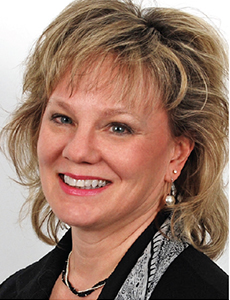2017 Vermont Report
Vermont Eyes Agency Captives

Agency captives have become increasingly popular in recent years, with more and more large associations with hundreds or even thousands of members looking to insure themselves.
Vermont, the leading domestic captive domicile, is currently working on legislation to allow them and could see it approved in a month.
An agency captive is essentially a reinsurance company owned by an insurance agency or brokerage that works through an agreement with a fronting carrier, whereby the captive receives a share of all premiums written and retains any investment income, but in return it has to pay a portion of the claims.
Most agency captives write business owner policy, package, general liability, errors and omissions, workers’ compensation and auto liability.
The concept of an agency captive or producer-owned reinsurance company (PORC) is nothing new; they have been around for several years, but few domiciles were willing to register them after they came under scrutiny from the Internal Revenue Service (IRS) and other regulators.
The problem was that under the PORC structure, producers could recommend a particular policy to a client because it generated an underwriting profit for its company rather than being the most suitable policy for that client.

David Provost. deputy commissioner, Captive Insurance Division, Vermont
It also allowed the producer to cherry-pick the best risks for its own PORC and offload the poorer risks to other carriers, as well as the model being used in fraudulent schemes.
“That’s why we will have a clear preference for an agency/producer that is working with program business and/or is owned or affiliated with the ultimate buyers, such as an association or other homogenous group of risks,” said David Provost, deputy commissioner for Vermont’s Captive Insurance Division, who tabled a proposal to register agency captives in a captive bill in January.
“Our proposal limits this to commercial insurance business — we are not likely to see heterogeneous risk being placed.”
Vermont Launch
The bill has already received the green light from the House Committee on Commerce and Economic Development, but it is still awaiting approval for a tax credit included within the bill from the Ways and Means Committee. Provost, for one, doesn’t anticipate any problems.
“I don’t anticipate that we’ll have any trouble getting it passed before the legislative session ends in May.” — David Provost. deputy commissioner, Captive Insurance Division, Vermont
“This year we decided to put forward a proposal to make it law in order to open the door to potential business,” he said.
“I don’t anticipate that we’ll have any trouble getting it passed before the legislative session ends in May.”
Similar to a group captive, instead of being owned by the group members, it is owned by an insurance agency such as an MGA or a program administrator, and the group business is placed with an insurer backed up by the captive as a reinsurance company, said Provost.
“That is exactly the kind of business that we are looking for — a group program with a captive to share and participate in the risk, and potentially the profits, as well as sharing best practices and other risk mitigation strategies,” he said.
“This should achieve a virtuous cycle where the group drives down costs, in turn generating profits which can then be returned to its members in the form of either a dividend or put back into cost control.”
“Working closely with our members we are able to better understand and mitigate against the risk, which ultimately helps control claims costs.” — Jan Klodowski, vice president at Agri-Services Agency
Provost said that, if granted approval, an agency captive would also be regulated in the same way as a group captive; required to provide an annual statement, actuarial review and audited financials, as well as undergoing a thorough review of its forms and contracts to ensure the policy is fit for purpose.
“The key to an agency captive is to ensure that there is full disclosure of all business placed to the members that are paying the premiums, and that they get the full benefit of the captive,” he said.
“In the case of the group captive, if it is generating a profit it is important that this is applied to the captive’s risk management strategy to drive down costs.”
Provost said that since announcing the proposal, Vermont started receiving an uptick in interest in agency captives.
“I don’t expect it will be a flood of applications, but we are probably going to see one or two a year.”
Provost added that an agency captive was perfect for large associations with difficult to place risks such as agricultural risks.
“It’s a lot easier to place that kind of risk if you have 500 or 1,000 policyholders than one or two,” he said.
“If you have got volume and a premium and it can be turned into something that is mutually beneficial and profitable for both the members and the insurer.”
Association Application
Agri-Services Agency (ASA), a wholly owned subsidiary of Dairy Farmers of America, formed more than 30 years ago to provide affordable insurance programs to its thousands of members and affiliated agricultural producers before being changed to a sponsored cell captive, similar to the agency captive model.
ASA started the Agrisurance Inc. captive in Vermont to provide consistent workers’ compensation for agricultural production companies that were struggling to secure coverage and was quickly extended to supporting businesses.
It’s considering moving to the agency captive model if and when Vermont legislators approve the structure.
“We knew that we had to reach a broad group of people and we wanted to be able to stabilize the pricing as well as have a consistent workers’ compensation program available for agricultural production and agricultural types of business,” said Jan Klodowski, vice president at Agri-Services Agency.
“To our members our program looks like a traditional insured’s, but we don’t have the same fluctuation in pricing even though we follow the state recommendations.
“And because we have that pricing flexibility we have been able to work with our members more effectively in investing the money back into developing safety programs.”
Klodowski said that at the time of setting up the captive, Dairy Farmers of America opted for a model that it could understand and favorably predict where its losses were going to be and price accordingly.
During the good years, any profits made were plowed back into value-added services for the program and into expanding the captive’s loss control team of agricultural experts, she added.
The captive, which had an underwriting combined ratio of 87 percent at the end of 2016, also has a claims manager and analyst onsite, said Klodowski. “When we have catastrophic losses as a result of serious accidents, we work closely with the employer and employee concerned to provide them with access to the best medical care.”
“Working closely with our members we are able to better understand and mitigate against the risk, which ultimately helps control claims costs.”
Gary Osborne, president of USA Risk Group, whose company has managed many agency captives and who advocated for agency captives for Vermont more than 10 years ago, said that from his experience, the most successful ones were individual agencies with a niche that allows for customization and specialized cover that forms a market.
“Specialized programs should be the target,” he said. &
__________________________________________________
2017 Vermont Report
Life Time Fitness finds a captive home in Vermont.
Risk & Insurance® speaks with Dan Towle as he departs from his long tenure as director of financial services for the State of Vermont.


 A Perfect Fit
A Perfect Fit Eight Questions for Dan Towle
Eight Questions for Dan Towle 







